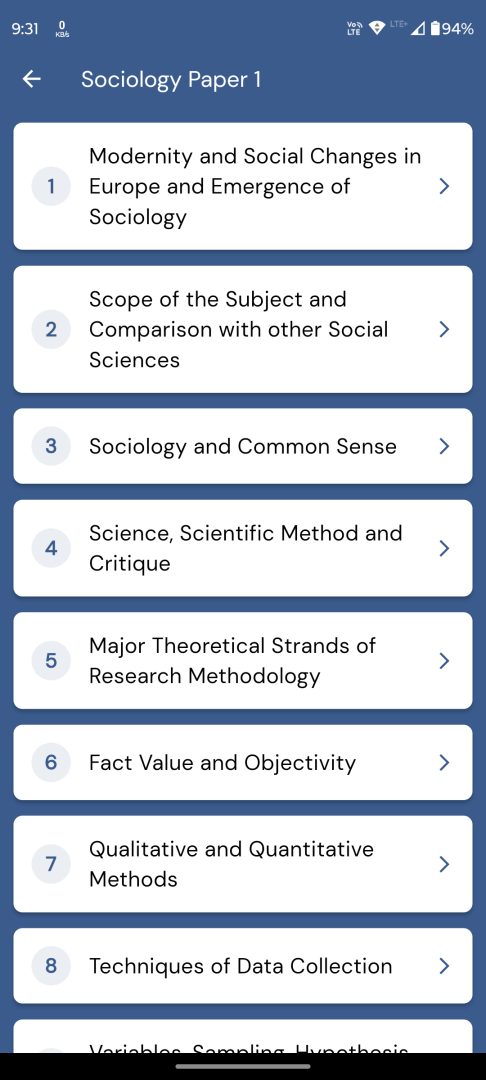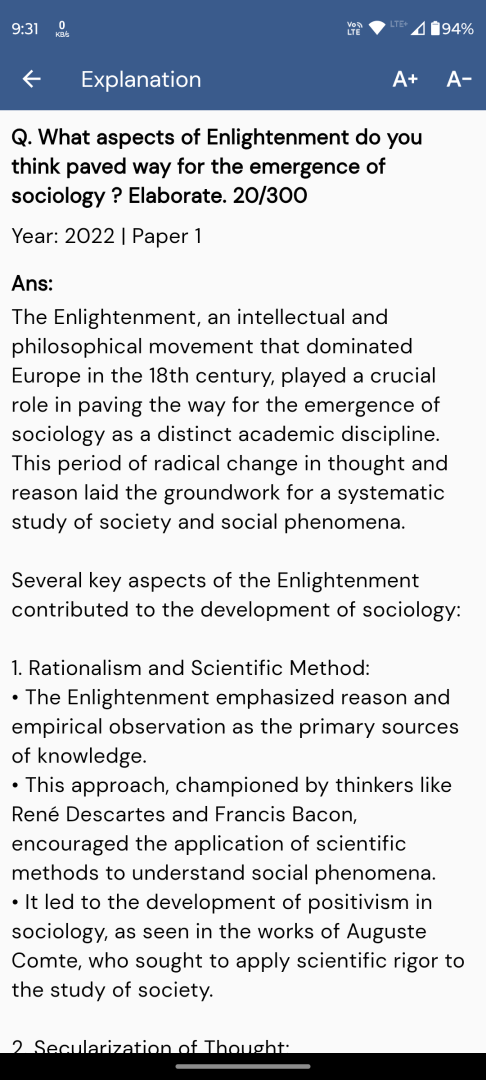Max Weber's Methodology in Sociology
Max Weber’s Methodology in Sociology
Max Weber, one of the founding fathers of sociology, made significant contributions to the development of sociological methodology. His approach to understanding social phenomena emphasized the importance of subjective meanings and values in human actions within specific social and historical contexts. This article explores Weber’s distinctive methodology, which contrasts with positivist approaches and focuses on interpretative understanding, ideal types, causality, historical comparison, and the role of the social scientist.
1. Verstehen: The Cornerstone of Weber’s Approach
At the heart of Weber’s methodology lies the concept of “Verstehen,” German for “understanding.” Unlike natural scientists who study external, objective phenomena, Weber argued that sociologists must delve into the internal world of human actors. He believed that social scientists, being human themselves, have unique access to the motives and feelings of their subjects.
Key aspects of Verstehen:
– Emphasis on subjective meanings: Weber stressed the importance of understanding the meanings individuals attach to their actions and interactions.
– Interpretative approach: Sociologists must interpret human behavior within its social and historical context.
– Distinction from natural sciences: This approach sets sociology apart from natural sciences, acknowledging the complexity of human behavior.
2. The Ideal Type: A Conceptual Tool for Analysis
Weber introduced the concept of the “ideal type” as a fundamental method for comparative study in sociology. An ideal type is a constructed model representing the most prominent characteristics of a phenomenon under investigation.
Characteristics of ideal types:
– Exaggerated and simplified portrayal of reality
– Serves as a measuring standard for comparison
– Facilitates systematic analysis of complex social phenomena
Example: An ideal type of bureaucracy might include features such as hierarchical organization, written rules, and impersonal relationships. Real-world bureaucracies can then be compared to this ideal type to analyze their similarities and differences.
3. Causality and Historical Comparison
Weber’s approach to causality in social phenomena was nuanced and multifaceted. He rejected simplistic, single-cause explanations and instead advocated for a plurality of causes.
Weber’s perspective on causality:
– Recognition of multiple causal factors
– Acknowledgment that some causes may be more significant than others
– Use of historical comparison to identify causal relationships
Case study: Weber’s analysis of the growth of capitalism
To illustrate his approach, Weber examined the development of capitalism in the Western world. He highlighted the importance of religious ethics, particularly Protestant values, in this process. However, he did not claim that religious values were the sole cause of capitalism’s development.
Method of historical comparison:
– Contrasted the growth of capitalism in the West with its absence in ancient China and India
– Concluded that the presence or absence of an appropriate ethic or value system played a crucial role
– Demonstrated the complex interplay of multiple factors in social phenomena
4. Values in Social Science: Ethical Neutrality and Value-Relevance
Weber’s methodology addressed the role of values in social scientific research, distinguishing between value-relevance and value-judgments.
Value-relevance:
– Acknowledgment that personal values influence the choice of research topics
– Recognition that societal values shape the questions considered important in a given historical context
Ethical neutrality:
– Insistence on maintaining objectivity during the research process
– Emphasis on understanding phenomena without passing moral judgments
– Focus on analyzing “what is” rather than “what ought to be”




